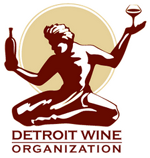The Big Six of Grapes: A crash course on the most popular varietals in six installments
Part Three: Chardonnay
There are six grapes that you really need to know about. Riesling, Sauvignon Blanc and Chardonnay are the white grapes. The reds are Pinot Noir, Merlot and Cabernet Sauvignon. These grape varietals are known and produced around the world. We’ll learn a bit about each grape, its aromas and flavors, and potential food pairings.
Grape number three in our crash course is Chardonnay (Shar doh NAY), the most popular white wine grape on the planet. It’s also one of the most malleable grapes used to make white wine. Chardonnay is grown just about everywhere. Just about anyone who drinks wine has had a bottle of this wine. There are some wine drinkers who order “ABC”, anything but Chardonnay, because they are “burnt out” on this extremely popular wine!
Like Sauvignon Blanc, Chardonnay is thought to originate in France, specifically from the Burgundy region in northeastern France. Two subregions of Burgundy are home to what many experts consider the finest Chardonnays. The Côte de Beaune (koht duh Bohn) is a very small area but it produces some of the greatest wines in the world. Mersault (mehr-SO), Puligny-Montrachet (poo-lee-NYEE mohn-rah-SHAY), and Chassagne-Montrachet (shah-SAHN-nyah mohn-rah-SHAY) are vineyard names commanding some of the highest prices in the world.
The other stellar subregion in Burgundy is Chablis (shah-BLEE). This is definitely not the jug-wine Chablis found in the value section of your local market! Chablis is delicate, dry, with aromas of citrus and mineral qualities. It’s usually unoaked and is a pure expression of the Chardonnay grape.
New World (essentially anywhere but Europe) Chardonnays run the gamut from medium-bodied and mellow to rich and voluptuous. California, Australia and Chile are the best-known producers of this ubiquitous wine. Aussie Chardonnays usually have tropical fruit aromas of pineapple and mango followed by big buttery flavors. Chilean wines are a bit leaner and reflect their terroir (tehr-WHAR) more than Australian Chardonnays.
This is the world’s most adaptable grape. It can be so very many different wines. Winemakers love to “play” with this grape. If the winemaker doesn’t manipulate the juice much, the wine will frequently smell of apples, pears and citrus if from a cool climate. If from warmer environs, pineapple, mango and banana are usually apparent. If s/he does decide to leave their signature in the wine, it will be very noticeable.
Aging in oak, whether French or American, is a primary factor in how the wine is made. The length of time the wine spends in that oak, the level of barrel-toasting and whether the wine is aged sur-lie all play important roles in determining what the wine will be. Many New World Chardonnays go through malolactic fermentation (MLF), a technique that converts malic acid into lactic acid, softening the wine and imparting added color
and flavors.
Keeping on course with our previous pairing styling, lighter style Chardonnays pair best with lighter foods while richer, more voluptuous wines complement heavier, luxurious dishes. The “Chablis style” Chardonnay pairs well with many vegetarian dishes, poultry, fin fish and shellfish. The “Burgundian style” enhances richer, fattier fish, cream-based sauces and soups and full-flavored dishes. What pairings do you enjoy most?
©2017Wine Counselor LLC

Michael A. Schafer Esq.
Michael is a member of the DWO board of directors
Sommelier, Certified Specialist of Wine, Certified Specialist of Spirits, Certified Culinary Travel Professional
The Wine Counselor® I taste bad wine so you don't have to ®


Leave A Comment